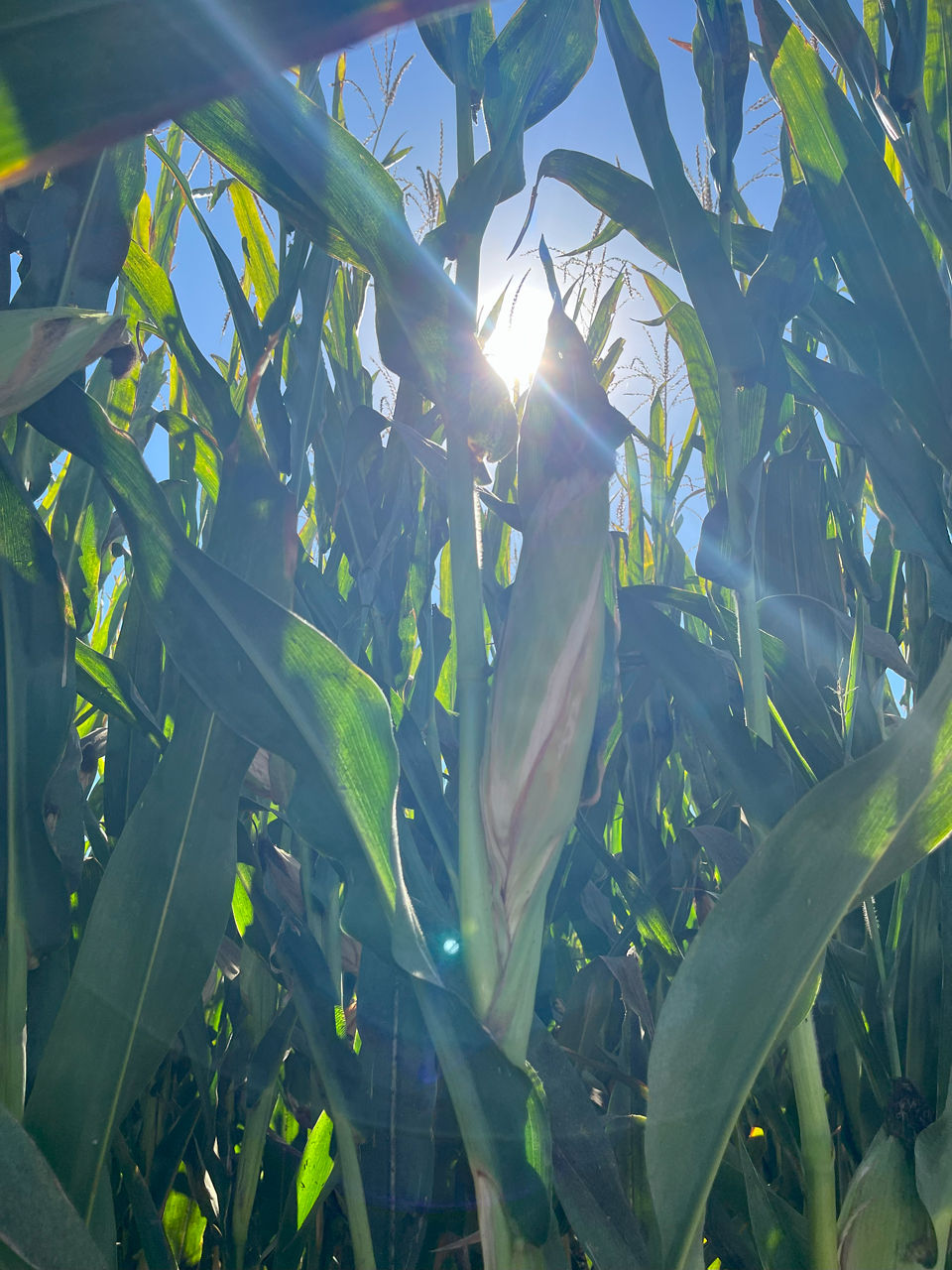Western Wildfire Effects on Corn Crops
January 9, 2025
Background of Western Wildfires
Natural wildfires have likely occurred since vegetation became established on land. The difference between natural fires from 420 million years ago and recent fires is their intensity.1 Vegetation fuels fires, a fuel source which is cured and made even more combustible during hot, dry weather. Wind additionally gives fire the means to spread rapidly, and western wildfires can burn over a million acres of land in a year. The thick smoke produced by these fires may leave growers wondering about its effects on crop growth.
Effects of Smoke on Plants
Smoke is a combination of particulates, various gases, and water vapor. The gases can include carbon monoxide, carbon dioxide, nitrogen oxide, several volatile organic compounds (VOCs), and small particulates. The VOCs and nitrogen oxides combine in the presence of sunlight to produce ozone. As ozone enters a leaf, this highly reactive form of oxygen interferes with photosynthesis and damages plant tissue on a cellular level, increasing the rate of senescence. A study published in 2015 found that, in the US, ozone levels reduced corn yields by 10% from 1980 to 2011.2
Corn Photosynthesis and Smoke
Corn fixes carbon using the C4 pathway, a type of photosynthesis which is more limited by the availability of sunlight than carbon dioxide. Heavy smoke can create a shading effect that reduces solar radiation by 50%, and a study conducted in 2018 and 2019 found that yield reductions can occur in some corn products with a sustained 30% artificial reduction in solar radiation.3,4 However, the photosynthesis rate of corn is optimized when light intensities are at 50 to 67% of full sunlight, so the diffuse light that filters through smoke may actually improve the rate of photosynthesis in corn if the smoke cover is not too thick.5 In short, a light, smokey haze can scatter light and increase solar infiltration of shorter wavelengths to lower leaves in the corn canopy and improve photosynthesis (Figure 1), but the heavy smoke cover like that experienced in the West may reduce photosynthesis and yield potential.

Grain Fill and Kernel Depth
Stress during the R5 growth stage reduces kernel weight and yield potential. By the R5 growth stage, 45% of the total dry matter that a corn plant will produce has already accumulated in the kernels.6 By the time corn has reached half milk line (R5.5), nearly 90% of total dry matter has accumulated in kernels. Given the most common timing of western wildfires, thick smoke can occur from the end of July through September in the western US, coinciding with corn grain fill. These conditions are especially noticeable when an early start to fire season establishes widespread, intense fires.
However, grain is not the only part of corn that can be damaged by reduced photosynthesis. The overall function of a corn plant relies on balancing above- and belowground structures. Although lighter grain test weights are attributed to the lack of photosynthesis, the system of plant parts self-adjusts to environmental conditions. Stalk cannibalization, or remobilizing of carbohydrates, can weaken corn stalks and potentially cause standability issues during smoky years as plants steal carbohydrates from their stalks to support grain fill. Additionally, roots support corn plant structure and the overall plant system throughout the year. Researchers have reported root weight reductions of nearly 50% along with ear dry weight reductions closer to 10% when plants were grown under low solar radiation from the three-leaf stage until maturity.4 This again shows the dynamic of sacrificing vegetative material to preserve grain production, even as grain production loses some yield potential.
Standability and Maturity
Yield gaps can be observed between corn products and across years. Some corn products have demonstrated greater ability to utilize lower light intensities than other corn products.4 As wildfires can be prevalent across drought years, growers should select corn products adapted to low light intensities, drought, and good standability.
Summary
Where wildfires are lasting longer and becoming more intense, growers have noticed some effects of smoke cover on crops, especially corn. To help maintain yield potential, growers can manage western corn fields by selecting hybrids with strong agronomics and stress tolerance and by prioritizing harvest of fields with standability issues. It may be worth trying earlier planting dates to get more grain fill time before heavy smoke days block solar radiation.
Sources
1Soomro, A. Rainforest fires; types, causes, effects, solutions. Environment Buddy. https://www.environmentbuddy.com/plants-and-trees/forest-fires-causes-effects-solutions/
2McGrath, J.M., Betzelberger, A.M., Wang, S., Shook, E., Zhu, X., Long, S.P., and Ainsworth, E.A. 2015. An analysis of ozone damage to historical maize and soybean yields in the United States. Proceedings of the National Academy of Sciences of the United States of America. 112(46): 14390–14395. https://doi.org/10.1073/pnas.1509777112
3Evans, D. 2024. How wildfire smoke impacts our food crop supply. Fox 13 News. https://www.newsbreak.com/news/3624412747304-how-wildfire-smoke-impacts-our-food-crop-supply
4Yang, Y. Guo, X., Liu, G., Liu, W., Ming, B., Xie, R., Wang, K., Hou, P., and Li, S. 2021. The effect of solar radiation change on the maize yield gap from the perspectives of dry matter accumulation and distribution. Journal of Integrative Agriculture. 20(2): 482–493. https://doi.org/10.1016/S2095-3119(20)63581-X
5Lindsey, A., Lindsey, L., and Ortez, O. 2023. How could the haze of wildfires affect crop growth? Ohio State University, C.O.R.N. Newsletter. https://agcrops.osu.edu/newsletter/corn-newsletter/2023-21/how-could-haze-wildfires-affect-crop-growth
6Ortez, O., Licht, M. 2024. A guide to corn growth and development. Ohio State University. ANR-0148. https://ohioline.osu.edu/factsheet/anr-0148
Web sources verified 01/02/25. 1014_464852